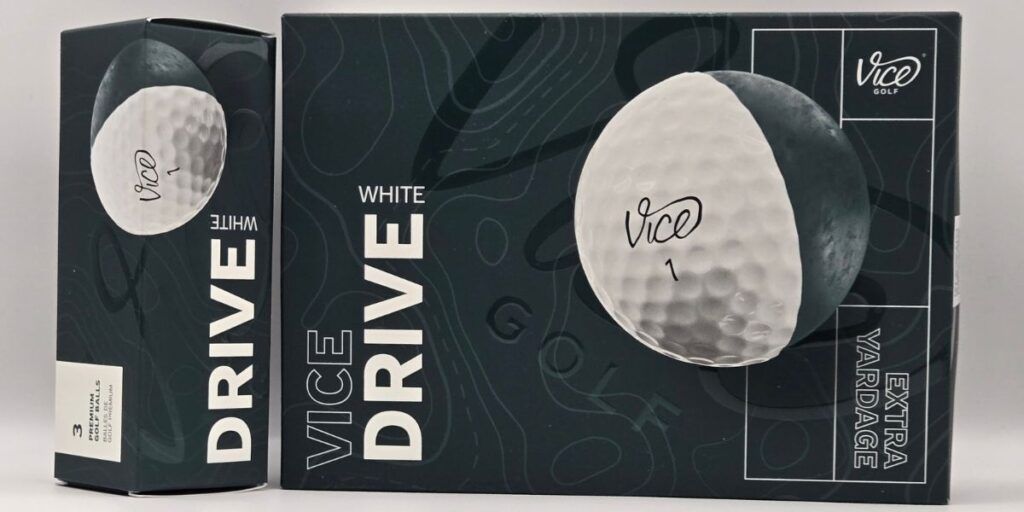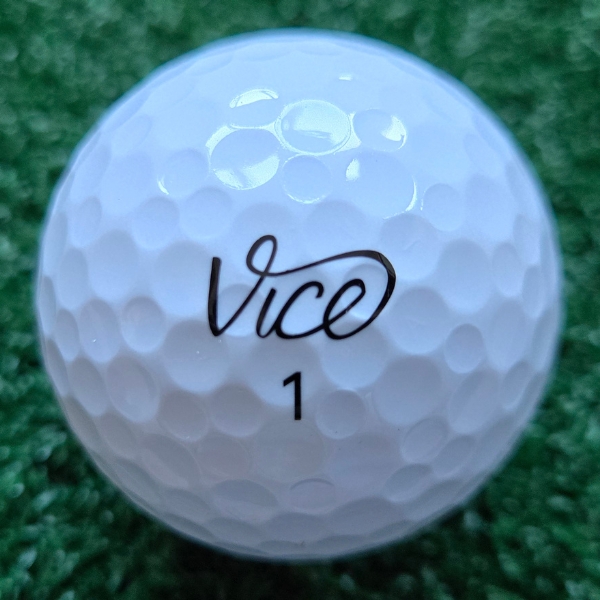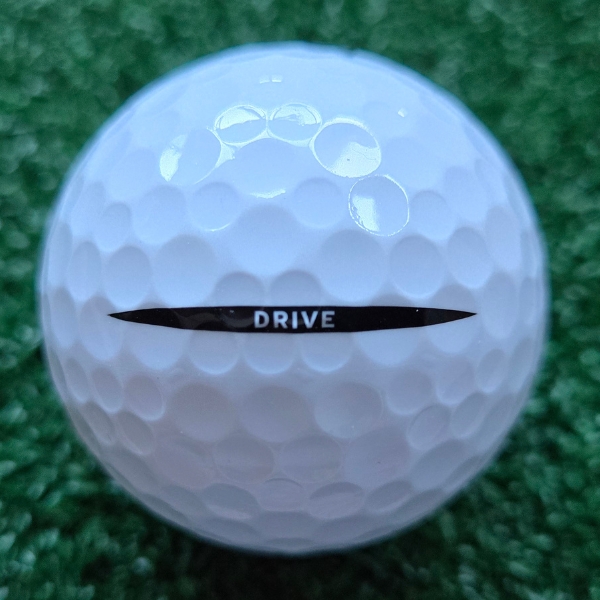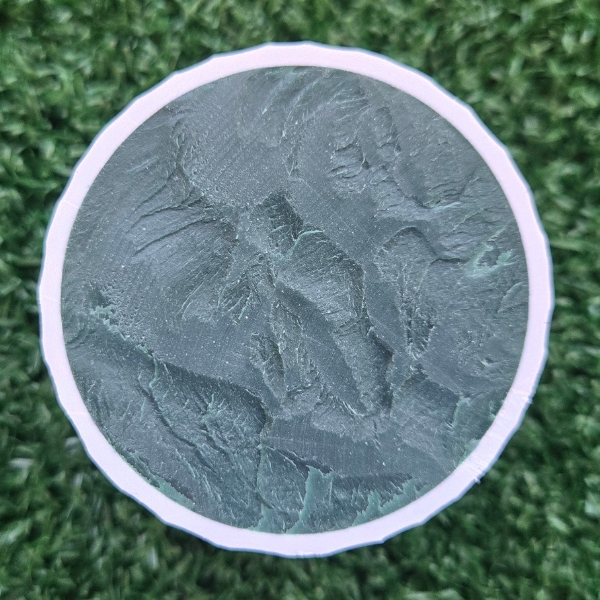This is it, the last but not the least of the Vice golf balls reviews. Don’t be fooled by its construction, this is not your typical two-piece ionomer-covered ball. The 2024 Vice Drive is a firm ball with a compression rating of 95. In other words, it is a distance ball.
Vice states that both low and high swing speed golfers can benefit from the ball when seeking distance. What about golfers like me? I am not sure what exactly my swing speed clocks at, but I am pretty sure it is somewhere in the middle. Nonetheless, I assume it will work for all swing speeds, even mine.
Like most low-spinning distance balls, this one should travel at a high flight trajectory. It is basically the only way for this type of ball to provide decent stopping power. Vice also says its construction and cover ensure durability and cut resistance. Since even the premium balls showed good durability, I can’t wait to see what this one offers.

There are a few key things that are new from the previous variation. First, the compression is increased significantly to maximize distance. Second, the cover is slightly harder to improve energy transfer. Then, lower spin combined with higher ball speeds results in increased distance. Finally, there is the increased durability. I was looking forward to testing this ball as much as all other Vice models. So, here is how it performed on the course.
Who Is This Ball For?
It is a ball for golfers who prioritize distance, prefer a higher flight trajectory, and don’t want to splash a lot of cash on balls. Also, it does not harm to mention the fairly straight flight. Don’t expect an amazing greenside performance as this ball is not built for that.
The high compression rating won’t appeal to anyone preferring the soft feel and consistently muted sound. So, if you disregard the lack of spin and harder feel, this ball is a great deal. Beginners and higher handicappers could benefit from its performance.
PROS
-
Beginner Friendly
-
Decent Feedback
-
Distance
-
Price
-
Straighter Flight
-
Variety of Colors
CONS
-
Less Overall Spin
Golf Ball Review
Here’s a little transparency: This post contains affiliate links. If you click and make a purchase, I may receive a small commission. Don’t worry, there’s no extra cost to you. It’s a simple way you can support my mission to bring you quality content.
On the Green
As soon as I started putting, two things stood out. First, the firm feel, which comes from the compression rating of 95. Second, the clicky sound, which I attribute to the ionomer cover. Now, these do not have to be deal breakers, but all who prefer that soft feel and mellow sound might not enjoy it.
A few words on my putting performance. Shortly, it was a mixed bag. I had multiple long putts, which I mostly left short of the hole. By short, I mean within 5 feet of the hole. Luckily, I managed to sink all but one, which cost me a three-putt.
All in all, it was not a bad experience. Also, I did not mind the feel and sound that much.
Around the Green
I can summarize this segment as not enough greenside spin. It is plain and simple as that. Almost every chip rolled way too long and went past the hole. I couldn’t find a way to control the chips, including my go-to bump-and-run. Only once did I get the ball within 2-3 feet of the hole.
The firmer ball got me more feedback. I could clearly feel and hear how I chipped it. Again, the feel was harder and the sound louder. That was fine with me, but the bigger issue was that I couldn’t adjust my chipping to the ball’s performance.



Approach Shots
I review all balls on a par 3 course, so every shot is an approach shot. Let me start with the ball’s main intent: distance. I categorize myself as a mid-swing speed golfer. Every time I connected well, the ball went a good distance. I had no issues reaching my numbers. On a couple of occasions, when I thinned it a bit, it went way too far. That is expected when you thin a shot anyway.
I have to point out the lack of spin each time the ball landed on the green. If it weren’t for the high flight trajectory, nothing would stop it from rolling even further. The roll was more prominent each time I lowered the flight trajectory.
The feel on strikes was leaning toward firmer. However, on occasions, the sound was a bit muted. The louder, clickier sound was heard on every mis-hit, especially on those thin shots. Because of its firmness, the ball provided decent feedback on every shot.
Durability
I don’t know what the deal is with Vice’s ionomer balls. Both Tour and Drive have not been as durable as I might have expected. Usually, ionomer balls are more durable than urethane ones. But in Vice’s case, it was almost the opposite.
It is not as bad as I make it sound, but it could be a bit better. Maybe I was expecting too much since Vice stated improved durability for this model.



Appearance and Price
I have said this a few times, but I will repeat it for the last time until Vice releases the next generation of balls. Vice golf balls look very nice and modern. I like their logo and putting alignment. Plus, if you like colored balls, there is plenty more to like.
If you thought the other Vice balls were cheap, wait until you hear this price. One dozen goes for $19.99, which comes down to $16.99 for three dozen, and finally to $14.99 for six dozen. It does not get much better than that. The 2024 Drive is available in white, yellow, pink, and blue colors.
My Verdict
This ball does not meet my criteria when choosing one. It flies too high and does not have enough spin. Even if I disregarded the disappointment with durability, I would still not put it in my bag.
However, it will have its audience. Vice has been improving all the ball models and still offers a great value for money. If you are looking for a simple distance ball for a great price, I could not recommend it more.

